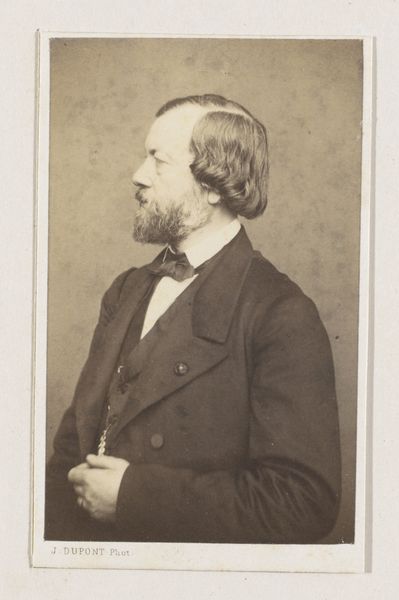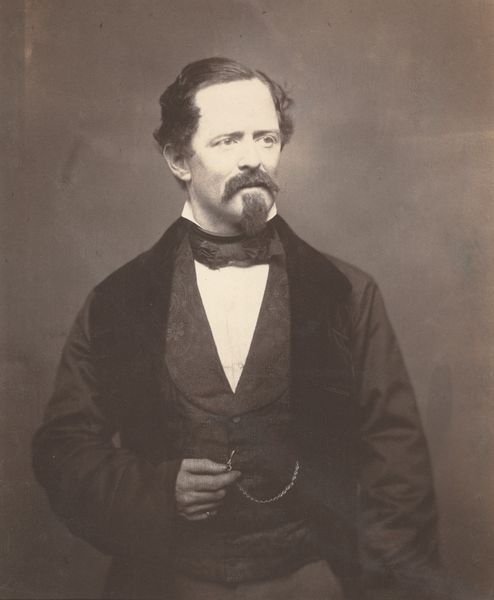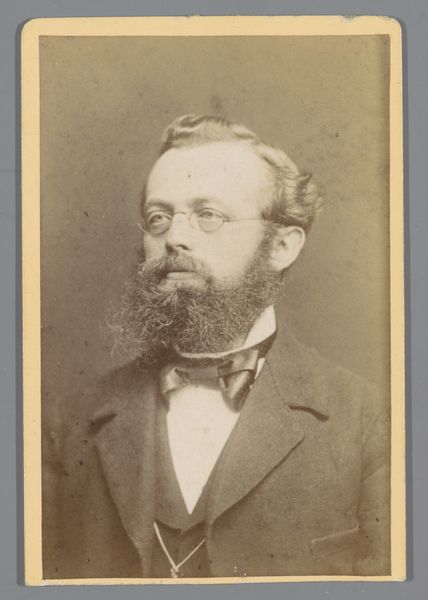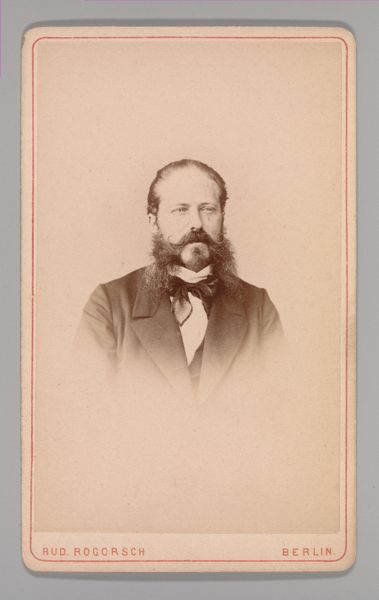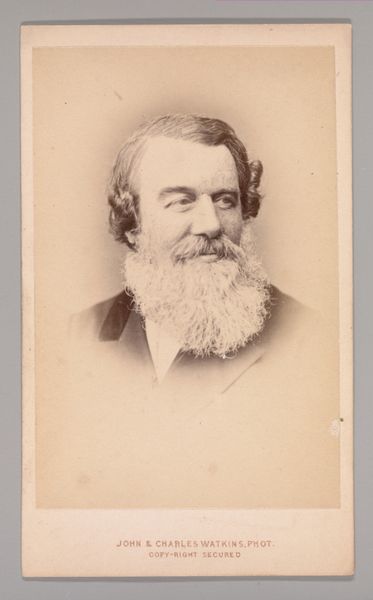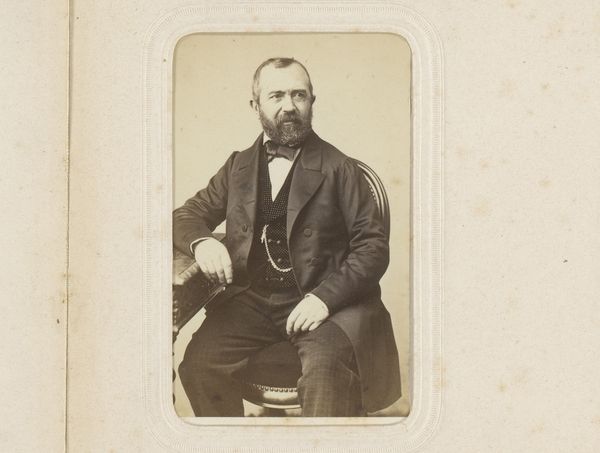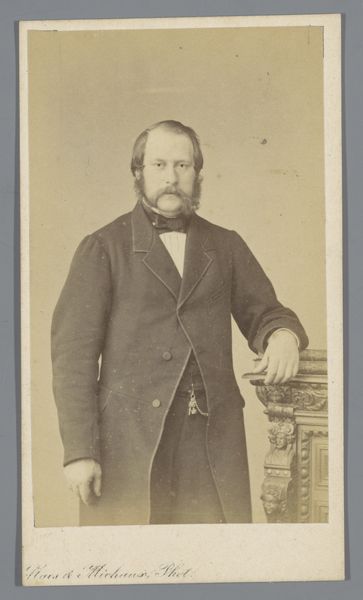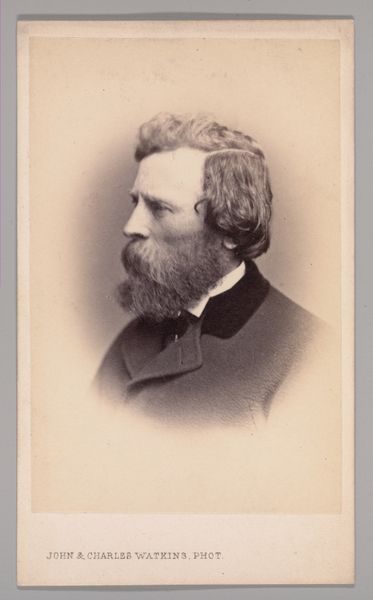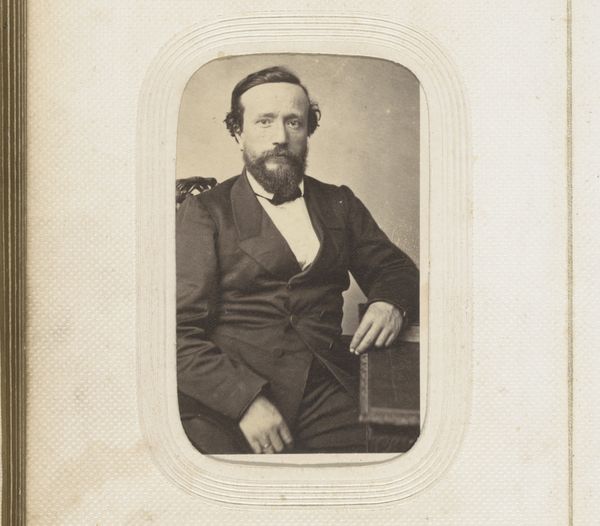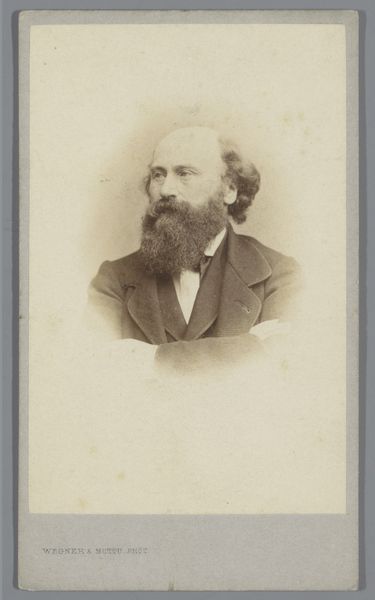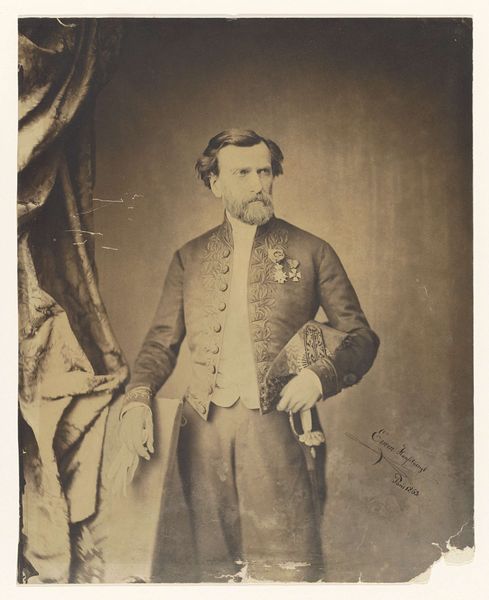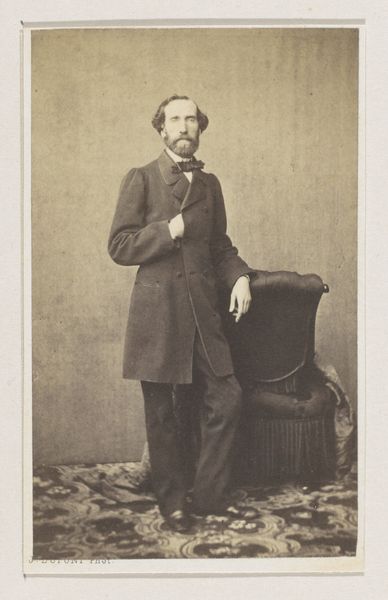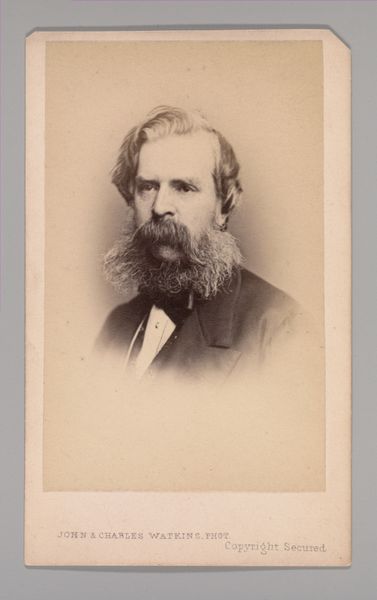
albumen-print, photography, albumen-print
#
albumen-print
#
portrait
#
16_19th-century
#
photography
#
historical photography
#
albumen-print
Dimensions: 7 1/8 x 5 9/16 in. (18.1 x 14.13 cm) (image)
Copyright: Public Domain
Editor: Here we have an albumen print portrait of Henry Pelham Fiennes Pelham Clinton, dating around 1860, by Jeremiah Gurney. The monochrome image exudes a somber air; its stillness is only enhanced by the sitter's steady gaze. I am struck by how tactile the texture of the man’s clothes appears in this medium. What elements stand out to you? Curator: I'm drawn to the materiality itself, the albumen print process. This wasn't just about capturing an image; it was a labor-intensive process involving egg whites and silver nitrate, a craft distinct from modern photography. Consider the photographer, Gurney; his studio likely employed numerous workers, from preparing the chemical solutions to mounting and finishing the prints. The production was structured almost like a factory. Editor: A factory? That’s quite different from the solitary artist image I typically associate with art! Curator: Exactly! The materials themselves are also tied to trade, labor and class. Who was able to afford a portrait like this, and who did it serve? The subject's clothing—the quality of the wool, the tailoring of the coat—speaks volumes about social status. We must question what social relations are embedded in its making. What's implied in such controlled consumption and display of one's public self? Editor: That’s so interesting – to consider photography not just as capturing an image, but also an indicator of class, of means… it certainly offers a different perspective. Curator: Precisely! This helps to unlock deeper interpretations beyond the surface representation. Instead, considering that this photographic 'product' becomes the tool with which to cement the visual status quo of the 19th century elite. Editor: I never would have considered that by just looking at it on the wall! Thanks for showing me the importance of understanding its method.
Comments
No comments
Be the first to comment and join the conversation on the ultimate creative platform.
